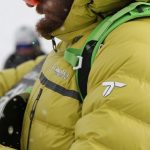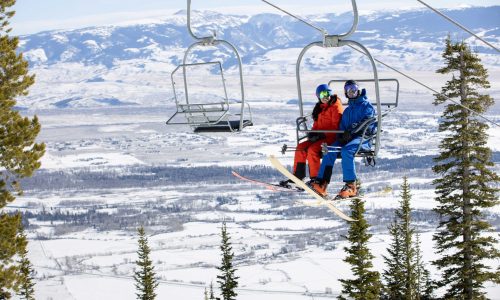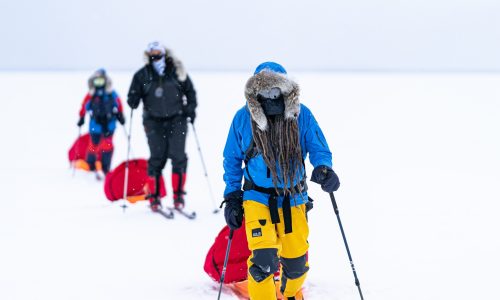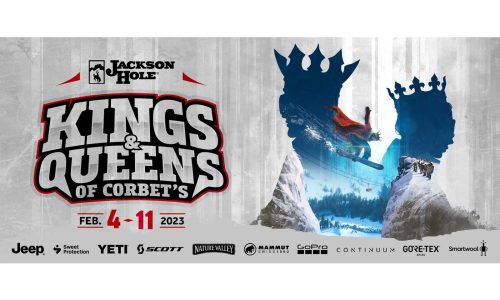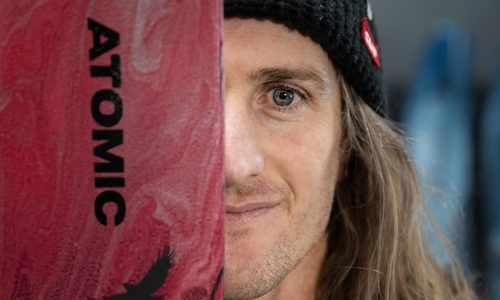Home » Gear Reviews » Ski & Snow » Ski Jackets » Heavily Insulated Ski Jackets » Strafe Highlands Jacket
Strafe Highlands Jacket Review
October 14, 2015 89
89 The Good
- Huge pit zips
- Relatively breathable for an insulated jacket
- Tough face fabric
- Light weight
The Bad
- Pricey
Built by a pair of hard-charging brothers from Aspen, Strafe gear is made for aggressive skiers who spend a lot of time on the slopes. The Strafe Highlands is the go-to jacket for cold conditions. The insulation breathes better than other synthetics, is light weight, and will never clump up like waterproof down.
Durability
The Higlands face fabric is a pretty burly, 3-layer ripstop over a Polartec Neoshell membrane. It’s made tough so that slashing against a few tree branches won’t bother it at all.
Weatherproofness
The Highlands checks all the weatherproofing boxes with a big hood that’ll fit over a helmet, a long hem line, taped seams, high collar, and wrist gaskets that seal out snow in even the hugest wipeouts (and increase warmth).
Breathability
The Polartiec Alpha insulation is one of the best sythetic insulations for moving moisture, so the Highlands stays relatively dry even when you overheat it on uphill jaunts. At 12 inches long, the pit zips are large, and mesh backed, so you can feel free to ride with them open without funneling in a lot of powder.
Features
The Highlands jacket sports a healthy eight pockets, two Napolean, an internal media pocket, hand pockets, a pass pocket on the arm and twin mesh drop pockets. If you need more pockets than that, consider riding with a backpack. The wrist gaiters are a nice touch. If you hate them, a pair of scissors will do the trick.
Function
The insulation is body mapped, meaning it’s thicker around the torso than in the arms, which saves weight and bulk. It was plenty warm even on frigid Jackson days, but breathed well during aggressive riding, and even short bootpacks. It’s got a warmth-to-weight ratio on par with down-insulated jackets.
All the ski jackets and pants reviewed are tested by the same five criteria; materials, features, weatherproofness, temperature control and fit/comfort. All the pieces were tested over multiple days in a variety of conditions to see how they perform throughout an entire ski season. Testers do all they can to try out every piece on the same day to compare each one in similar conditions and they get out on lots of days to test the jackets in a range from sunny spring days to stormy wintery days to see how they hold up.
For materials, the specifications provided by the brands is often very important. These specifications tell us what type (if any) and amount of waterproofing or insulation a jacket may have. With a wide variety of third-party insulating and waterproofing materials available, as well as the recent rise of “in house” proprietary materials being used, it is important to know exactly what fabrics and insulations are being added to each piece in an effort to distinguish what makes one piece better than the next. Since testers typically only have only one season to test these pieces, durability is determined in part by any obvious fraying, ripping or other signs of reduced durability.
Since heavily insulated jackets are primarily intended for lift accessed skiing and riding there is an expectation that features will be tailored to provide the ultimate in comfort and convenience when on the mountain. This means that features such as a powder skirt, pockets for gear, a dedicated pass pocket, a helmet compatible hood, and wrist gaiters are all expected and then extra features such as a RECCO reflector or insulated phone pocket are considered a bonus.
The weatherproofness of a jacket first depends on what the intended purpose of the jacket is and then is based on the specifications that the brands supply. Since most heavily insulated jackets will be used at the resort under cold conditions there is an expectation that the jacket be able to shed blowing snow for the stormiest of days yet also fairly breathable. Since these jackets are for very cold weather, waterproofness isn’t as necessary.
The temperature control of a jacket is also based on the specifications that the manufacturer provides. The line between a lightly and heavily insulated jacket isn’t clear cut but generally one would expect to use a heavily insulated jacket primarily when the temperatures drop well below freezing and need to still be comfortable when the day proceeds to get even colder. The jackets are then rated to how well they do in very cold temperatures and more importantly how well the jacket does when the temperatures fluctuate which is a common occurrence for any regular snow sports enthusiast. Breathability plays a big factor here because the breathability of a jacket will affect how warm or cold one feels as heat generated while skiing and then go sit on a long chair lift afterwards. The ability to fully unzip pit zips is a crucial part of temperature control since that is often the largest factor in preventing overheating.
Lastly, the fit and comfort category is fairly subjective but having multiple testers use the product provides for a good range of body shapes and opinions. Factors that are important here are how long or short a jacket is and if it is true to size. For determining comfort, the amount of stretch the jacket has and how soft it is on the inside often plays into the rating.










